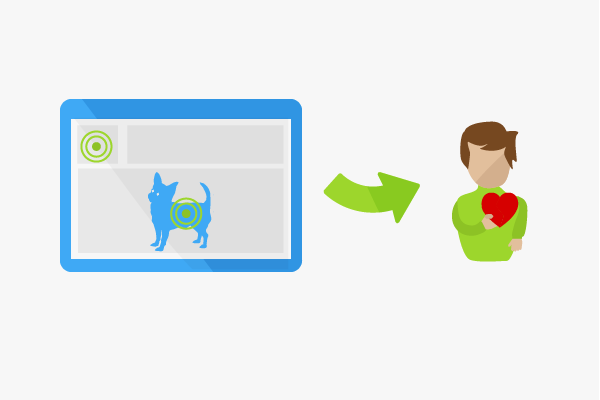Emotional Targeting
Emotional targeting is a form of addressing target groups in which advertisers consciously want to reach the recipient's feelings. For this purpose, so-called "triggers" are used on websites that address the emotional centers in the brain. Emotional targeting is based on findings from neuropsychology and behavioral research. This relatively new form of targeting can be used in all online media and can be classified as part of neuromarketing.
Background
In many situations, people not only act rationally, but are also encouraged to take action through their subconscious mind. This fact also applies to shopping. If an offer appeals not only to the mind due to a reasonable price or practical advantages, but also to the emotional level of the potential buyer, this can lead to faster conversion and makes it more likely that the user will spend more money. At the same time, this emotional process can also have a positive effect on brand or shop loyalty.
Emotional targeting uses targeted methods and means that address the emotional level of the human being. This can be done in a variety of ways and affect both media and design.
In classic advertising, emotional targeting has always been used in print media or for TV commercials, for example a father eating a ready-make pizza with his son. Emotions are addressed strongly by moving pictures or photos.
On the web, on the other hand, marketers have even more far-reaching possibilities to arouse the emotions of the recipients. The Internet is almost predestined for the use of emotional targeting. The consciously evoked feelings are varied. With appropriate measures, trust, a sense of belonging, reward, recognition or competitive spirit can be activated.
Additional analysis methods such as eye tracking or web analysis tools make it even easier and more precise to measure the success of emotive targeting on the web. If emotional targeting is used in the area of social media, likes or shares can also be evaluated as possible KPIs for the success of corresponding campaigns.
Implementation
Successful emotional targeting requires an in-depth target group analysis. Personas can facilitate the development of appropriate campaigns. Important elements of all campaigns or websites are pictures. Photos can address people directly without words and activate the emotional centre. A good example of emotional targeting is the website of the flat sharing provider Airbnb, which, like its competitors, focuses on emotions. Once the target groups have been defined, the next step is to select the appropriate methods. If emotional targeting is to be used on websites, the entire design, wording and use of images must be rethought. How can visitors' feelings be best reached? Which colors are recommended? These are just two of the many questions that designers, copywriters and marketers have to ask themselves together. The question of the target group and the approach that activates the feelings of the target group is not limited to their use for websites. This approach also applies to social media campaigns, mailings or SEA.
Uses
Emotional targeting is not limited to just one medium on the internet.
- Video campaigns can very quickly arouse and direct the feelings of viewers.
- Through social media channels, emotionalizing stories can be told with the help of images and texts.
- In mailings, photos or texts offer good opportunities to activate the reader's emotional centre.
- Websites can be made more "humane" by using images of people who look at the user directly, for example.
- Through online games, visitors can be emotionally connected by responding to rewards in the games.
Significance for online marketing
If your users experience positive feelings on the internet, you will have a big advantage. Positive emotions create trust in brands and products, and this increases the chance that products will be purchased and recommended. Positive emotions help the consumer identify with the product. Emotional targeting has the potential to make the internet, which is perceived as cold and technical, appear more "human" to consumers.

